Politics of India works within the framework of the country's Constitution. India is a parliamentary secular democratic republic in which the president of India is the head of state & first citizen of India and the Prime Minister of India is the head of government. It is based on the federal structure of government, although the word is not used in the Constitution itself. India follows the dual polity system, i.e. federal in nature, that consists of the central authority at the centre and states at the periphery. The Constitution defines the organizational powers and limitations of both central and state governments; it is well recognised, fluid and considered supreme, i.e. the laws of the nation must conform to it.
India has a parliamentary system as defined by its constitution, with power distributed between the union government and the states. India's democracy is the largest democracy in the world.
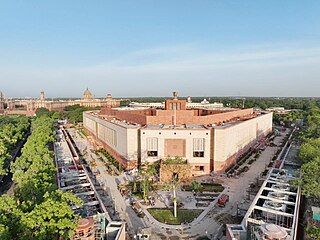
The First Lok Sabha was constituted on 17 April 1952 after India's first general election. The 1st Lok Sabha lasted its full tenure of five years and was dissolved on 4 April 1957. The First Session of this Lok Sabha commenced on 13 May 1952.
Madhu Dandavate was an Indian physicist and socialist politician, who served as Minister of Railways in the Morarji Desai ministry, and as Minister of Finance in the V P Singh ministry.

Mumbai North Central Lok Sabha constituency is a Lok Sabha (parliamentary) constituency of Maharashtra state in western India.

Mandi Lok Sabha constituency is one of the four Lok Sabha (parliamentary) constituencies in Himachal Pradesh state in northern India. Pratibha Singh, representing INC, won the last Lok Sabha byelection in 2021 from Mandi following the death of Ram Swaroop Sharma who won in 2019 general Lok Sabha election.

Lakshadweep Lok Sabha constituency is a Lok Sabha constituency, which covers the entire area of the Union Territory of Lakshadweep in India. This seat is reserved for Scheduled Tribes. As of 2014, it is the smallest Lok Sabha constituency in terms of electorate. Lakshadweep didn't have an elected Member of Parliament till 1967.

General elections were held in India between 25 October 1951 and 21 February 1952, the first after India attained independence in 1947. Voters elected the 489 members of the first Lok Sabha, the lower house of the Parliament of India. Elections to most of the state legislatures were held simultaneously.
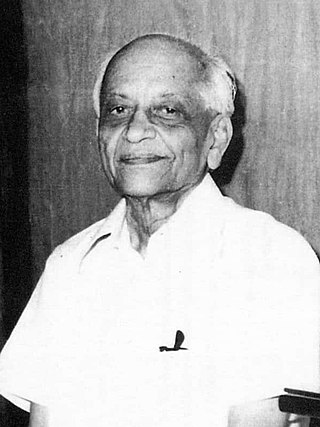
General elections were held in India between 19 and 25 February 1962 to elect members of the third Lok Sabha. Unlike the previous two elections, each constituency elected a single member.
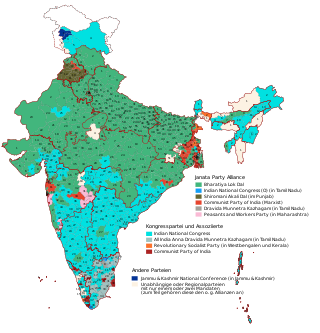
General elections were held in India between 16 and 20 March 1977 to elect the members of the sixth Lok Sabha. The elections took place during the Emergency period, which expired on 21 March 1977, shortly before the final results were announced.
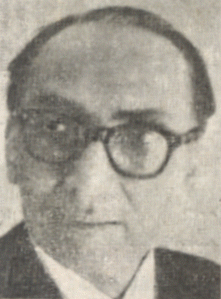
Ashoke Kumar Sen was an Indian barrister, a former Cabinet minister of India, and an Indian parliamentarian.

Sukumar Sen was an Indian civil servant who was the 1st Chief Election Commissioner of India, serving from 21 March 1950 to 19 December 1958. Under his leadership, the Election Commission successfully administered and oversaw independent India's first two general elections, in 1951–52 and in 1957. He also served as first Chief Election Commissioner in Sudan in 1953.

Vadodara is one of the 26 Lok Sabha constituencies in Gujarat, a state in Western India. This constituency covers 7 out of 10 Vidhan Sabha constituencies of Vadodara district and first held elections in 1957 as Baroda Lok Sabha constituency in erstwhile Bombay State. It has been known as Vadodara since the 2009 elections. Its first member of parliament (MP) was Fatehsinghrao Gaekwad of the Indian National Congress (INC) who was also re-elected in the next elections in 1962. He was the Maharaja of Baroda of the Gaekwad dynasty at the time. P. C. Patel of the Swatantra Party won the election in 1967. From 1971–80, Gaekwad was MP of this constituency again firstly as a member of the Indian National Congress (Organisation) and then as a member of the INC. His younger brother, Ranjitsinh Pratapsinh Gaekwad also of the INC represented the constituency from 1980–89 for two terms before being defeated by Prakash Brahmbhatt of the Janata Dal party in the 1989 election.
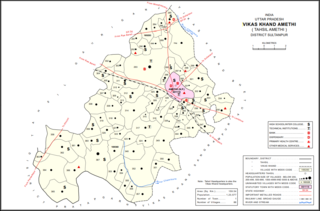
Amethi is one of the 80 Lok Sabha constituencies in the Indian state of Uttar Pradesh. This constituency covers the entire Amethi district and was created in 1967. Its first member of parliament (MP) was Vidya Dhar Bajpai of the Indian National Congress (INC) who was elected in 1967 and held his seat in the next election in 1971. In the 1977 election, Ravindra Pratap Singh of the Janata Party became its MP. Singh was defeated in 1980 by Sanjay Gandhi of the INC. Later the same year, Gandhi died in a plane crash. This forced a by election in 1981 which was won by his brother, Rajiv Gandhi. Gandhi went on to represent this constituency until 1991, when he was assassinated by the Liberation Tigers of Tamil Eelam (LTTE). The subsequent by election held the same year was won by Satish Sharma of the INC. Sharma was re-elected in 1996. Sanjaya Sinh of the Bharatiya Janata Party (BJP) defeated Sharma in the 1998 election. The widow of Rajiv Gandhi, Sonia Gandhi represented this constituency from 1999 to 2004. Her son, Rahul Gandhi, was elected in 2004. He was the fourth MP from the Nehru–Gandhi family since 1980 to represent the seat. Gandhi held the seat till the 2019 election when he was defeated by a margin of 55,000 votes by the BJP's Smriti Irani.
Madhubani is one of the 40 Lok Sabha (parliamentary) constituencies in Bihar state in eastern India.

Nagapattinam is a Lok Sabha constituency in Tamil Nadu. Its Tamil Nadu Parliamentary Constituency number is 29 of 39. The seat is reserved for scheduled castes. The constituency is noted for being an historically communist stronghold, having elected Communist Party of India parliamentary representative seven times.

Matihani Assembly constituency is an assembly constituency in Begusarai district in the Indian state of Bihar.
J. Mohammed Imam was an Indian politician and 2 time Member of Parliament (MP), represented the Chitradurga constituency in Lok Sabha, the lower house of the Indian Parliament.

A Member of Parliament in the Lok Sabha is the representative of a legislative constituency in the Lok Sabha; the lower house of the Parliament of India. Members of parliament of Lok Sabha are chosen by direct elections on the basis of the adult suffrage. The maximum permitted strength of members of parliament in the Lok Sabha is 550. This includes the maximum 530 members to represent the constituencies and states and up to 20 members to represent the union territories. Between 1952 and 2020, two seats were reserved for members of the Anglo-Indian community. The current elected strength of the Lok Sabha is 543. The party—or coalition of parties—having a majority in the Lok Sabha chooses the Prime Minister of India.
The Indian general election of 1962 elected the 3rd Lok Sabha of India and first election after formation of "Gujarat", was held from 19 to 25 February. Unlike the previous two elections but as with all subsequent elections, each constituency elected a single member. Jawaharlal Nehru won another landslide victory in his third and final election campaign. The Indian National Congress took 44.7% of the vote and won 361 of the 494 seats. In Gujarat, INC won 16 seat out of total 22 seats.


















